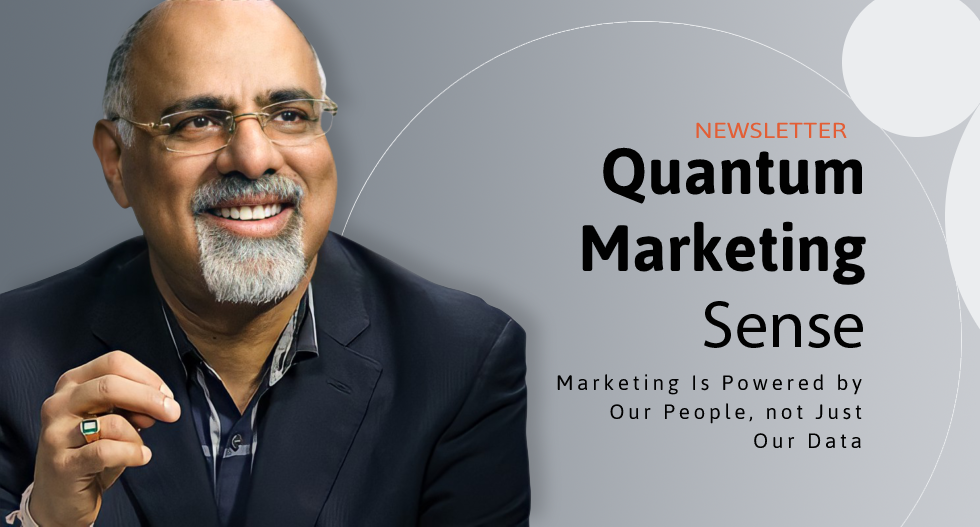This article previously appeared in AdWeek
Marketing has played a role in society for as long as there have been messages to deliver.
What started as purely creative art has been shaped by social change, economic cycles and disruptive technologies. Successful marketers today are backing up their creativity with a deep understanding of these dynamic, rapidly evolving forces and harnessing new digital platforms to empower their teams and extend their reach. How CMOs visualize their creative engines hasn’t changed, but the engines themselves have: They’re now powered by innovation.
To set their brands apart, marketers must now embrace a speedily expanding slate of digital capabilities. It takes the right mix of skilled, adaptable and future-ready talent—what I call a team of Leonardo da Vinci’s—to build an innovative marketing machine. Thoughtfully selecting and developing that team is the only way to survive and thrive as we sprint toward marketing’s next paradigm.
What’s at stake
Technology hasn’t replaced creativity and never will. The marketers leading the pack today are using augmented and virtual reality to enable their teams’ creativity. The metaverse, IoT, blockchain and 5G networks give marketers new channels and platforms to engage with consumers.
AI and machine learning can heighten human instinct and judgment to create more useful and relevant content while keeping personal data secure. There are two dozen technologies like these transforming our everyday interactions and disrupting marketing in the process.
This creates an enormous opportunity: With the latest digital innovations extending marketers’ reach, CMOs can focus creative resources to support their greatest objectives: boosting brand awareness, preference and trust and nudging consumers to action.
The right team—one that is both creative and tech-forward—will maximize both assets. A business that assembles its marketing team sloppily, or fails to nurture and develop it long-term, will lose touch with its talent, struggle to innovate and watch as consumers leave it behind.
Building your team
Don’t just start—rebuild and reboot. In the age of quantum marketing, old team dynamics and structures no longer apply.
CMOs must reject narrowly defined roles in brand marketing, performance analytics and process management. Teams must be multitalented and flexible.
They must recognize the opportunities stemming from emerging tech and move quickly to stay ahead of the competition. They must respect the imperative of consumer privacy in a data-driven industry. The strongest teams will be thoughtfully built of many agile, forward-thinking individuals who can fill gaps, learn quickly and get the job done.
Be sure to do your homework. Find out what skills and competencies you need to be effective. Consider your organization’s competitive context and company culture, and make sure you design a marketing team that’s built to move the business toward its short- and long-term goals.
First, survey your existing team from top to bottom. Map out their skills. Look for untapped potential in those who work quietly in the background. In my own experience, this exercise has helped me identify some surprising candidates who had been flying under the radar.
Next, widen your view to other areas of your company. Subject matter experts and company generalists with diverse experience can enrich the marketing team. Their existing relationships inside the organization can help build effective, cross-functional partnerships. Stay focused on quick and eager learners.
You should also search actively for candidates outside the company or even the industry. They bring fresh perspectives and unique experiences that can help jumpstart your own team’s thinking and inspire innovation in marketing and beyond.
Don’t overlook students and young professionals. What they lack in experience, they make up for in big ideas. They are naturally open and curious, without old ways of thinking standing in their way.
Value your investments
Once you’ve assembled your team, a new responsibility emerges: supporting their continued growth and development. Talent is our most precious resource, but it is not self-sustaining. As leaders, we must value every team member and provide the resources they need to grow stronger and more effective.
That could mean ongoing formal training, skills development or partnerships between newer and more seasoned employees to tap into hidden potential. Each can learn from the other; mentorship is not a one-way street.
In many ways, tech disruption has leveled the playing field for businesses and talent. Agile, future-focused small businesses have gained a leg up on industry giants. A new grad with vision and dedication can set the corporate ladder on fire.
That makes it even more critical for CMOs to set an example from the top. We must exemplify the qualities we seek in new talent and expect from our established teams.
That means encouraging and enabling them to learn and upgrade their skills. We must ensure that our talent stays current on the digital tools that power our industry’s future and that they are open to game-changing ideas and transformative thinking.
A carefully built and supported team is what puts digital advances into action. It is our people, not just our data, that power an innovative marketing machine—one that outworks and outwits its competitors, strengthens the brand and the bottom line and keeps a business thriving for years to come.
